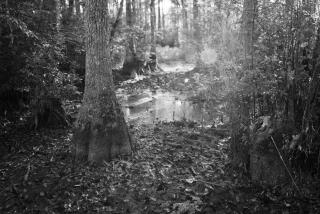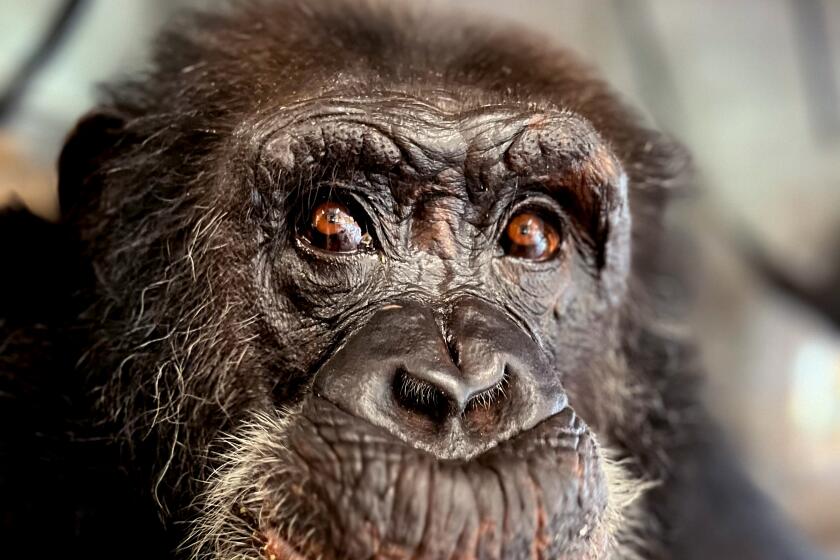Huntington’s ‘Strange and Fearful Interest’ is a rare view of Civil War
The Civil War’s terrible toll forced Americans to contemplate death and dying in ways they never had before. The four-year conflict claimed an estimated 750,000 lives.
“In terms of the population, it’s as if about 7 million people were killed today,” says Jennifer Watts, a curator at the Huntington Library, Art Collections, and Botanical Gardens.
The immensity of the losses was as unprecedented as the immediacy of the images of military life — and death — recorded by enterprising photographers. Their pictures of bodies lying in bleak fields brought home the consequences of faraway battles.
To mark the Civil War’s 150th anniversary, the Huntington is presenting an exhibition that, says Watts, “explores how photography and other media were used to describe, explain and perhaps come to terms with this national trauma.”
“A Strange and Fearful Interest: Death, Mourning, and Memory in the American Civil War” features more than 200 pieces, including photographs by Alexander Gardner, Mathew Brady, Timothy H. O’Sullivan, George N. Barnard and Andrew J. Russell as well as lithographs and ephemera.
The exhibition, which opened this month, grew out of the Huntington’s desire to showcase rarely seen original photographs and other items in the extensive Civil War holdings the San Marino institution has amassed since key acquisitions were made by its founder, Henry E. Huntington.
Another inspiration was Drew Gilpin Faust’s 2008 book, “This Republic of Suffering: Death and the American Civil War.” Faust, a historian and president of Harvard University, examined “the impact death had on the American psyche,” says Watts, the Huntington’s curator of photographs and the show’s curator.
“This involved not just logistical aspects but the whole framework of society … pensions, identification of soldiers, national cemeteries,” Watts says. “Faust also looked at how people had to make sense of what happened both as individuals and as a society for which there had to be some moral reckoning beyond the fact that the Union was preserved and slaves were free.”
“A Strange and Fearful Interest” — the title comes from a quote by Oliver Wendell Holmes Sr. — is built around three themes: the battlefront, the assassination of President Abraham Lincoln and the commemoration of the war.
It opens with pictures of the living. Watts notes that photography, which came of age technologically during the war, provided “a tether between home and battle,” with soldiers and loved ones finding comfort in each other’s portraits.
Watts says the Huntington collection contains “some of the photographs and photographers that are absolutely essential to understanding the war.” A number are represented in the “Battlefront” section, including what she calls “a haunting, iconic” picture of men killed in the 1863 Battle of Gettysburg that was taken by O’Sullivan and printed by his then-employer, Gardner.
The image, one of whose titles is “A Harvest of Death, Gettysburg,” depicts “bloated bodies, surrounded by the detritus of battle … left there because there were too many bodies to handle.”
Usually, she adds, “we see this piece on its own, but it had a second life when Gardner included it after the war in his two-volume masterwork — which is in the show — his ‘Sketch Book’ of photographs with text that told a cautionary tale for future generations.”
Also on display are images by Gardner and James F. Gibson who, while working for Brady, took pictures of fallen soldiers at Antietam, the 1862 battle in Maryland that produced about 23,000 casualties in a single day. “The first photographs of American dead on the battlefield came from there,” says Watts.
Weeks after the September clash, Brady displayed the Antietam images in his New York gallery. “You will see hushed, reverend groups standing around these weird copies of carnage,” the New York Times wrote about the exhibition, “bending down to look in the pale faces of the dead.”
Public fascination greeted pictures from the front, which were disseminated through the publication of woodcuts derived from photographs in illustrated magazines and through stereographs and deluxe volumes. The era’s cumbersome field photography was better suited to aftermath and other non-action scenes, explains Watts, who adds that more Northern photographs survive in part because Southern photographers faced greater constraints.
After four years of bitter fighting, America moved from what Watts calls “the madness of what had just finished to the madness to come” — the murder of Lincoln by John Wilkes Booth in April 1865.
“There was an unbelievable outpouring of grief,” Watts says. “Obviously, the South felt differently and not everyone in the North liked Lincoln, but he was a father figure to many … and he became more popular in death than in life.”
The speed of events after the shooting — which occurred days after Robert E. Lee surrendered to Ulysses S. Grant at Appomattox — outpaced photographers’ ability to record them. So this section includes lithographs and items such as the “wanted” notice seeking Booth and his conspirators, funeral train memorabilia and what Watts calls “the granddaddy of deathbed prints” — an artist’s proof of John B. Bachelder’s engraving based on a painting of the dying president by Alonzo Chappel, who inflated the number of relatives and dignitaries in the room to more than 40.
Watts says the hanging of four conspirators, which Gardner photographed, represents “the final brutal act of the period.”
At war’s end, the nation sought to remember the fallen and to heal its wounds. These efforts were exemplified by the commemoration of the pivotal Battle of Gettysburg, during which Union forces rebuffed Lee’s invading Confederate troops in Pennsylvania after the sides suffered an estimated 51,000 casualties in three days.
“Gettysburg became the crucible of Civil War myth and memory,” Watts says, “and is now the most monumentalized place in America” — hence an exhibition wall covered with William H. Tipton photographs of regimental markers.
In “A Strange and Fearful Interest,” Watts says, “we’re presenting original works in a contemporary installation” that includes an “aural landscape” commissioned from artist Steve Roden, computer kiosks that offer closer looks at selected images and online features accessible through the Huntington’s website. She hopes the exhibition, which runs through Jan. 14, “provides a compelling visual record of the war.” (A companion manuscripts show, “A Just Cause: Voices of the American Civil War,” on view through Jan. 7, examines the fierce debate over the causes and mission of that war.)
“One hundred and fifty years later, these pictures remind us of the great ordeal that shaped America,” says Watts. “And of how photography provided a means of reporting and remembering that ordeal.”
More to Read
The biggest entertainment stories
Get our big stories about Hollywood, film, television, music, arts, culture and more right in your inbox as soon as they publish.
You may occasionally receive promotional content from the Los Angeles Times.










